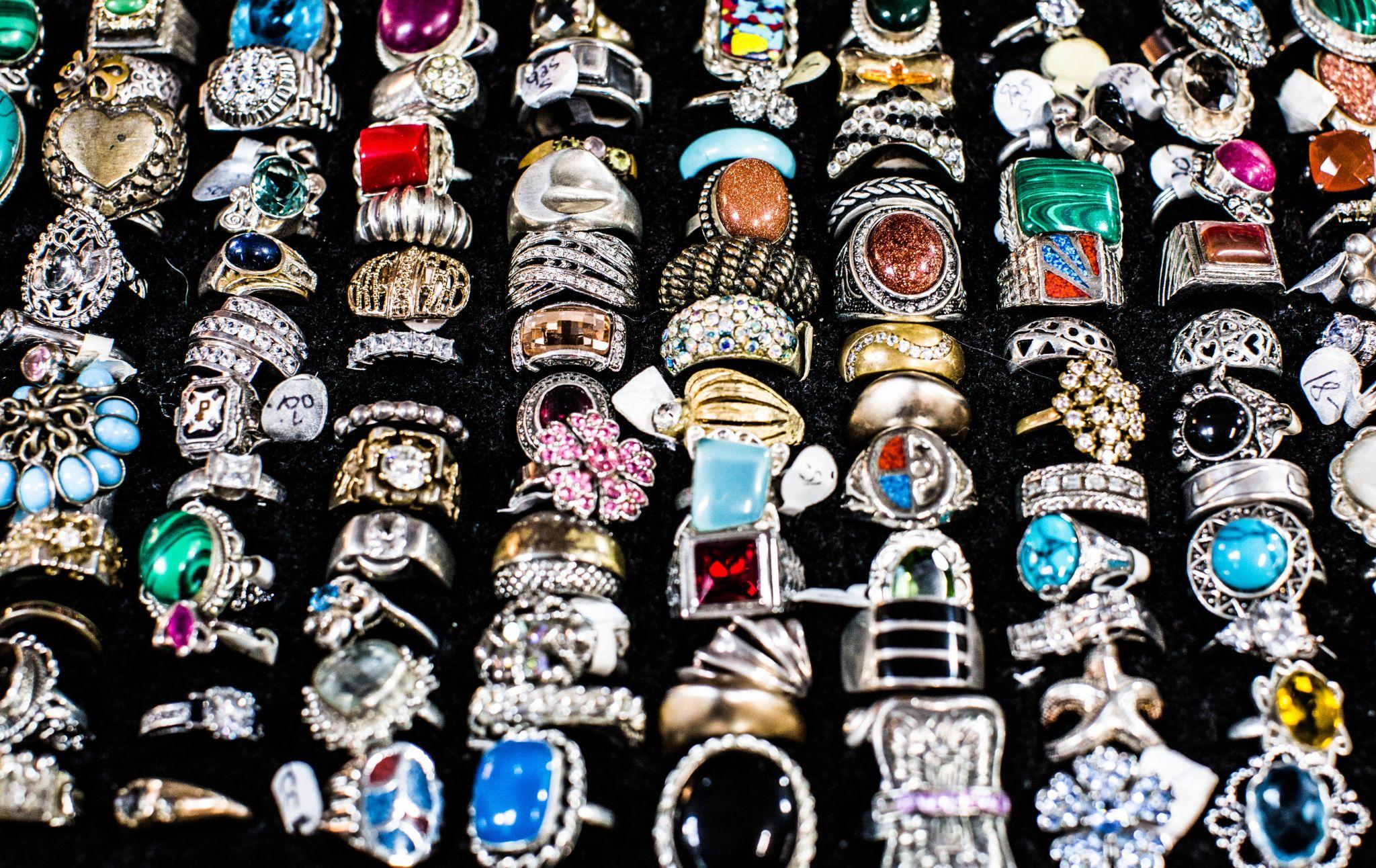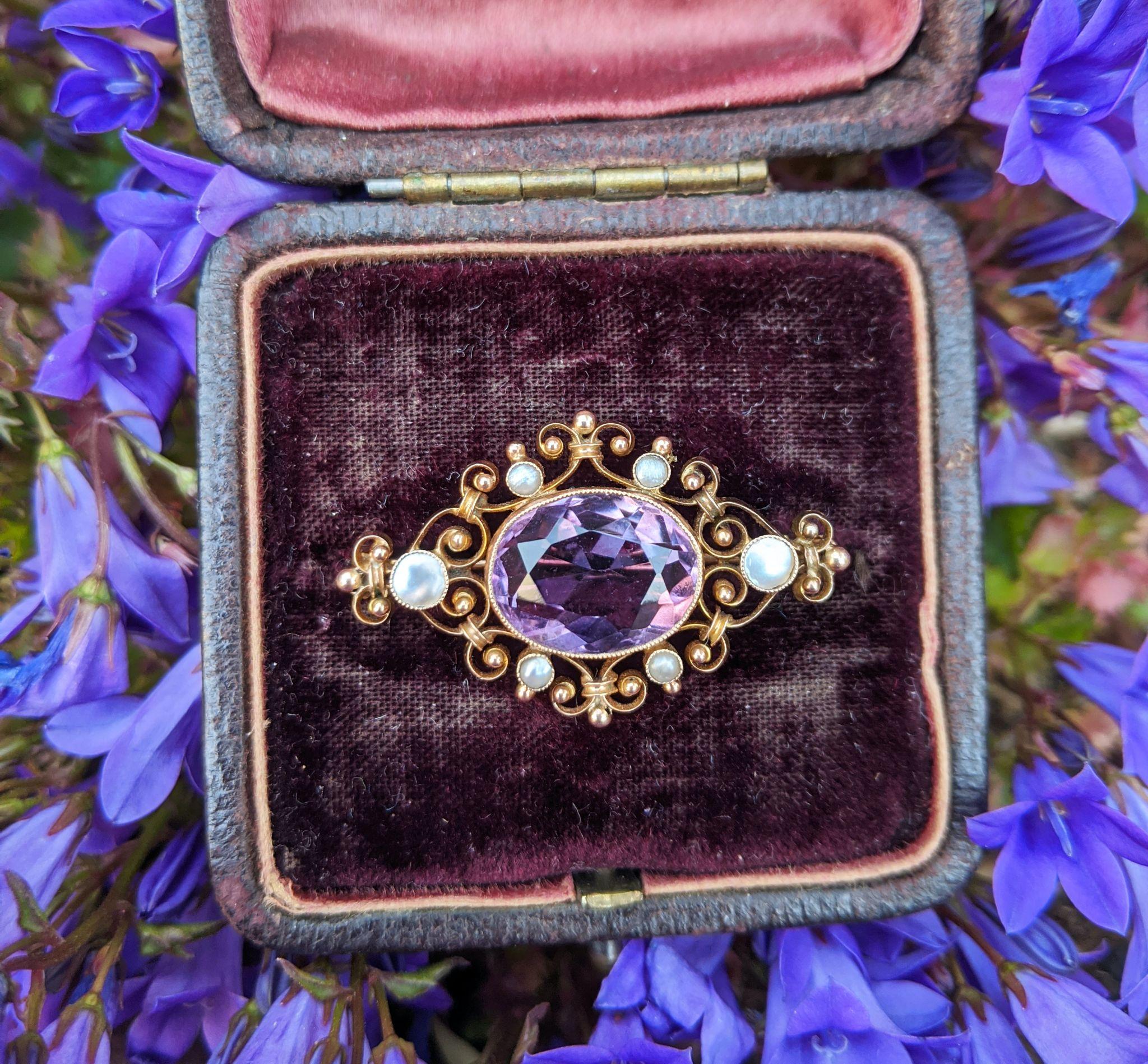It can be difficult to decipher the wide variety of antique symbols stamped on jewelry, so we’ve put together a short summary.
The most common types of hallmarks, engravings and other antique symbols stamped on jewelry are:
- Purity marks
- Maker’s marks
- Assay marks
- Date letters
We’ll also reveal some of the others - including monograms, patents and more.
Here’s our antique jewelry identification guide to the different symbol types.
Purity marks
If you see any three digit antique symbols stamped on jewelry, these indicate the purity
If you see any three digit antique symbols stamped on jewelry, these indicate the purity.
Despite being three numbers long, they actually represent percentages. For example:
- 950 on platinum jewelry means it’s 95% platinum and then a mix of other metal alloys
- 750 on gold jewelry means that it’s made of 75% gold - that’s 18 karats (18k)
- 925 on silver jewelry is 92.5% pure silver - that’s sterling silver
You’ll often see some letters, acronyms or full words too. These are other purity marks and common ones include:
- The letter k after a two-digit number on gold jewelry - 24k is pure gold
- PLATINUM or PLAT signify that the jewelry is platinum
- STERLING, STG or STER all indicate that the jewelry is sterling silver
- Vermeil means that the jewelry is sterling silver with gold plating
- Nickel Silver or German Silver mean that the jewelry is actually made of nickel, zinc or copper
- HGE, GE or GF stand for Heavy Gold Electroplate, Gold Electroplate and Gold Filled respectively - these mean the jewelry is mainly made of other materials, with only a small amount of gold
If you see any other lettered antique symbols stamped on jewelry, these could be a maker’s mark.

× 
Antique jewelry maker’s marks
Also known as trademarks, these are stamps made by the jewelry manufacturer
Also known as trademarks, these are stamps made by the jewelry manufacturer. They can serve as a kind of signature to guarantee purity.
Therefore, they could also be used to hold the manufacturer responsible if any issues arose at a later date.
In the UK and US, many maker’s marks feature an ampersand - for example, Tiffany & Co.
There are several online maker’s mark encyclopaedias which can help you verify these trademarks and indicate the approximate age of the jewelry - for example, on the 925-1000 or Lang Antiques websites.
Assay marks
Also known as town marks, in the late middle ages many countries - particularly in Europe - introduced a mandatory identification system to indicate the town of the local metalsmith.
The most well-known assay office for such jewelry hallmarking is the Birmingham Assay Office, founded in 1773.
An anchor symbol signifies jewelry from Birmingham - not because the city has a port, but because this icon was chosen at the Crown & Anchor Tavern!
Other British assay marks include:
- Leopard head: London
- Rose: Sheffield
- Castle: Edinburgh
From 1838, an eagle on gold jewelry means that it’s French. More specifically, a boar’s head is the sign for Paris’ assay office while outside of the capital, a crab emblem was used.
The term ‘hallmarking’ arose because the first UK assay office, established early in the 14th century, was Goldsmiths’ Hall in London.

× 
Date letters
A date letter was required on jewelry made in the UK from 1478 until 1999
A date letter was required on jewelry made in the UK from 1478 until 1999, when they were made voluntary. You’re unlikely to see a date letter on intricate jewelry, because there isn’t enough space for the mark.
It’s a letter from the alphabet, one for each year, with the cycle repeating after 25 years.
Why 25 years, not 26? An assay office would decide to omit either the i, j or l to prevent any risk of misinterpretation.
To avoid confusion between, for example, a letter b 25 years apart, different letter fonts or contour shapes were also used.
Other antique symbols stamped on jewelry
If you can see any other antique symbols stamped on your jewelry then it could be one of these:
- Designer marks
- Duty marks
- Engravings and monograms
- Import and export marks
- Patent marks
- Retailer marks
- Tally marks
Identifying any of these can help you learn more about your jewelry.
Summary: antique symbols stamped on jewelry
The main types of antique symbols stamped on jewelry are purity marks, maker’s marks, assay marks and date letters.
Start by studying these to learn more about your jewelry’s history, age and ultimately, value.
If you found this antique jewelry identification guide helpful, you may also find our other how to identify antiques articles useful:
To enquire about our range of antique fireplaces and other antiques, or for any other queries, please don’t hesitate to contact us.